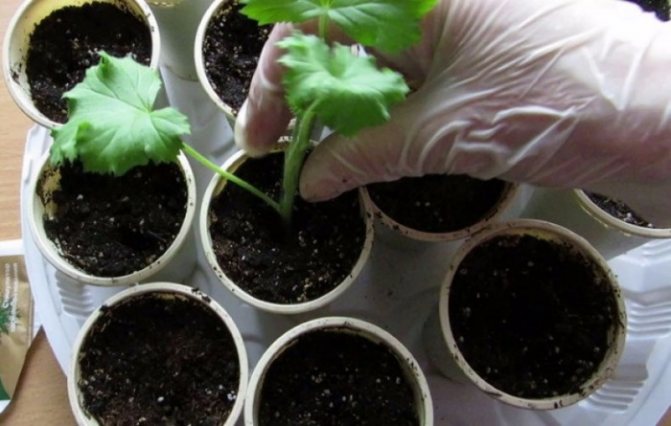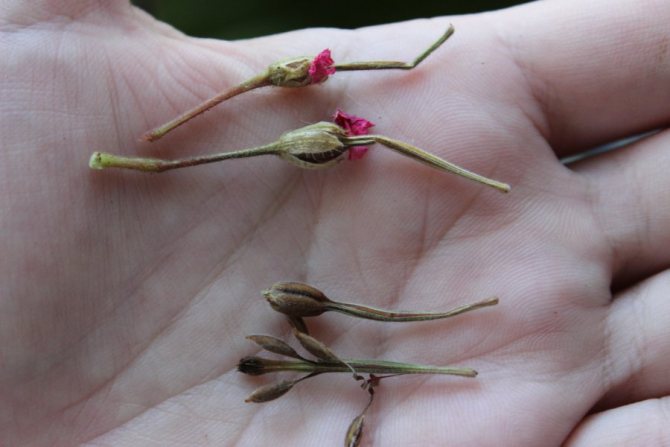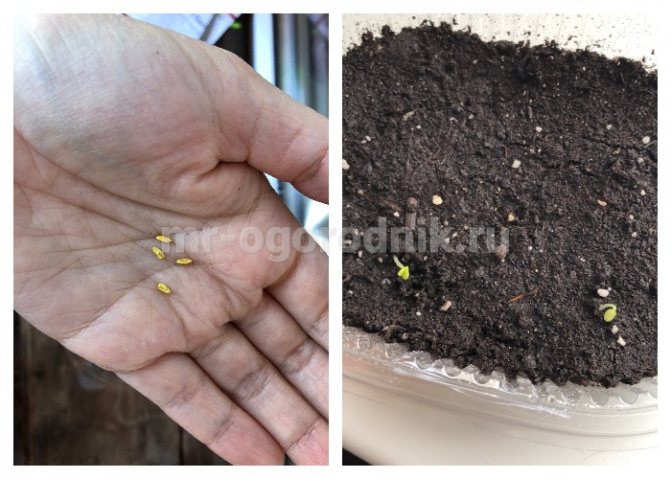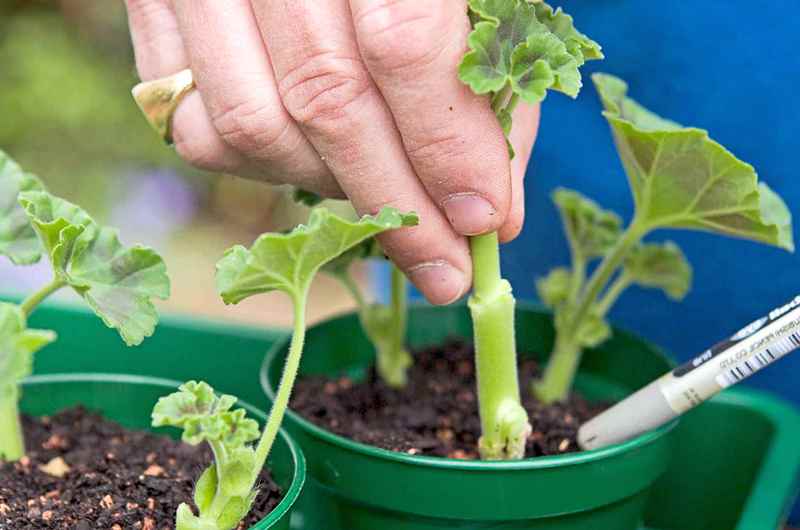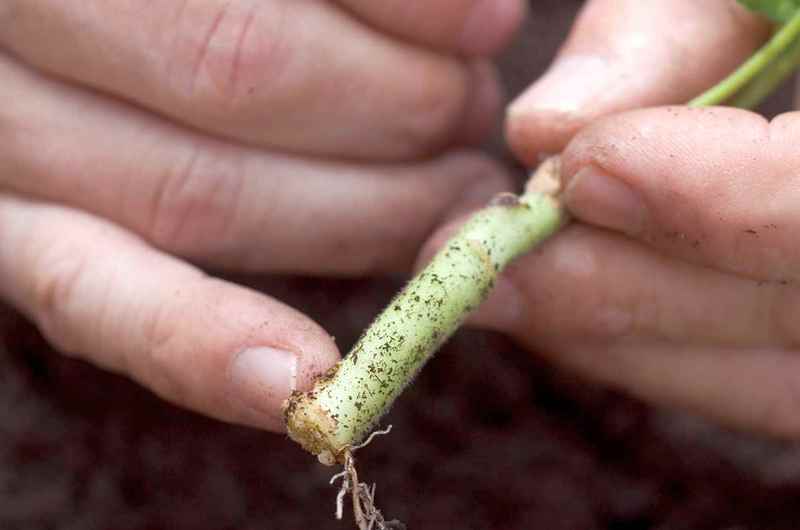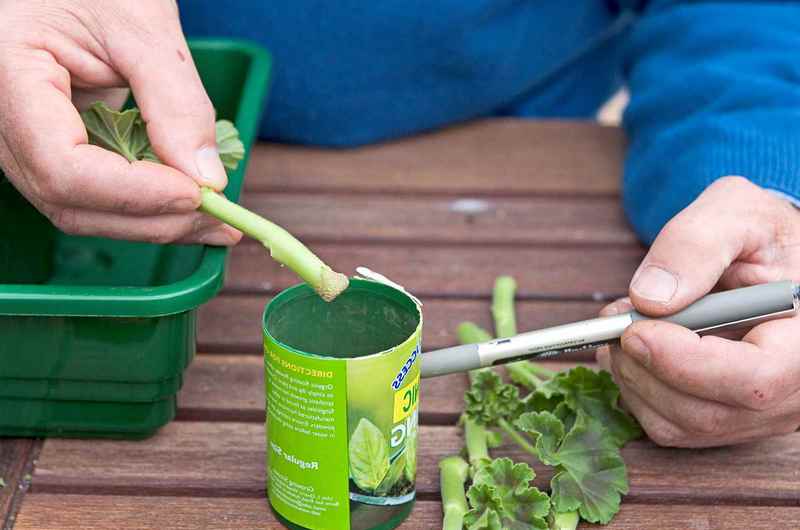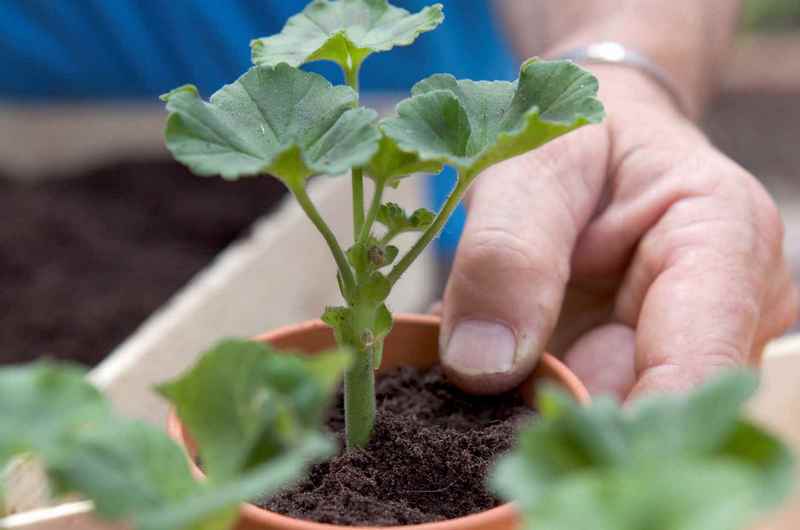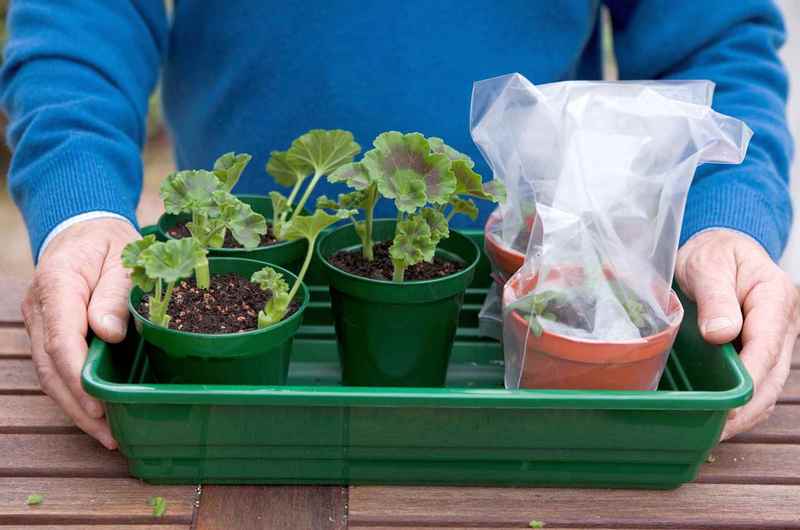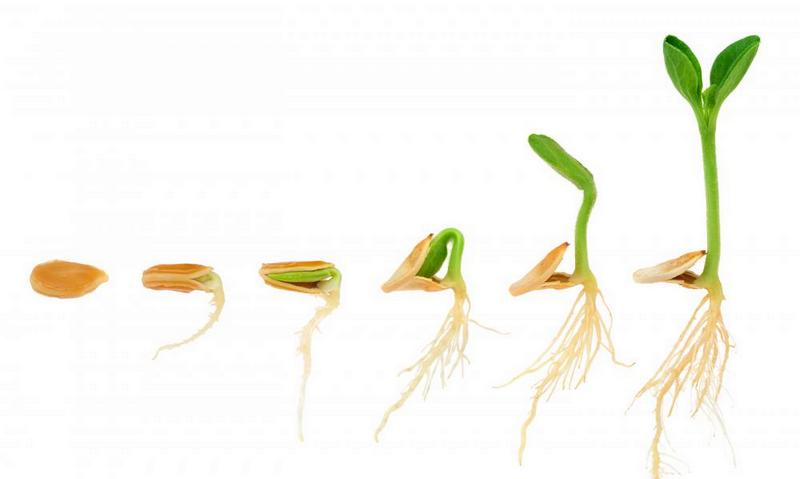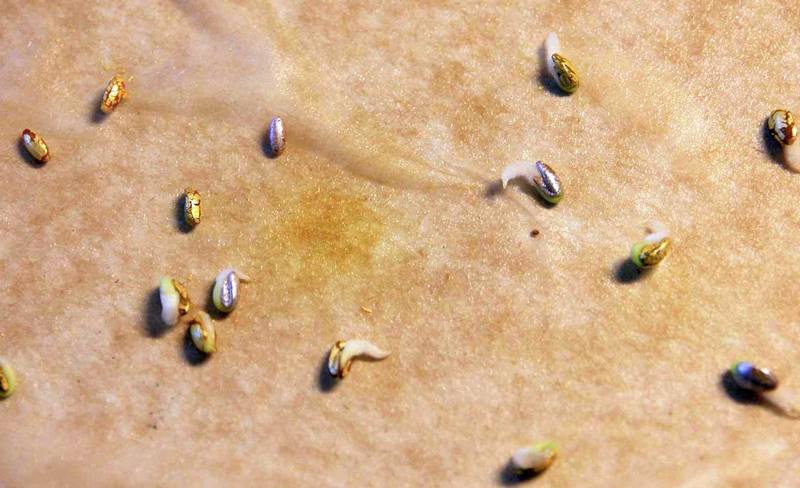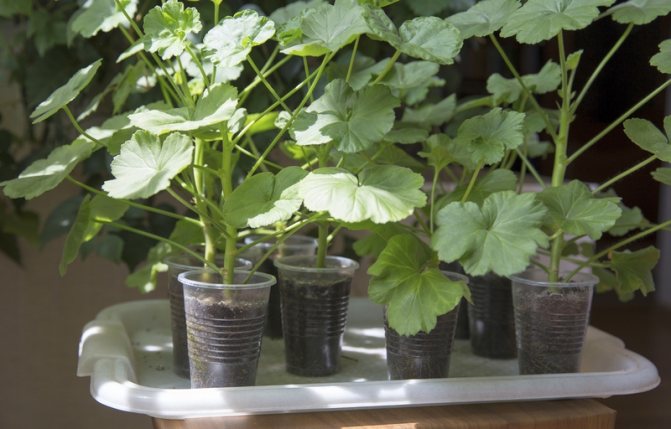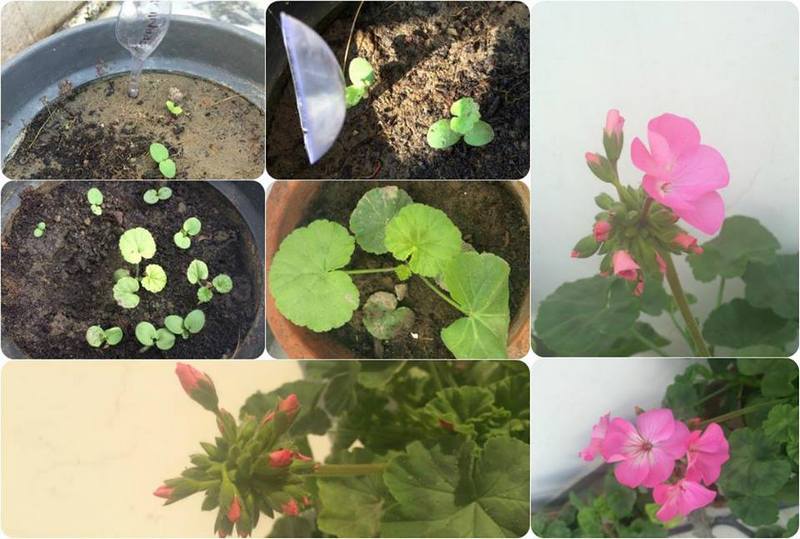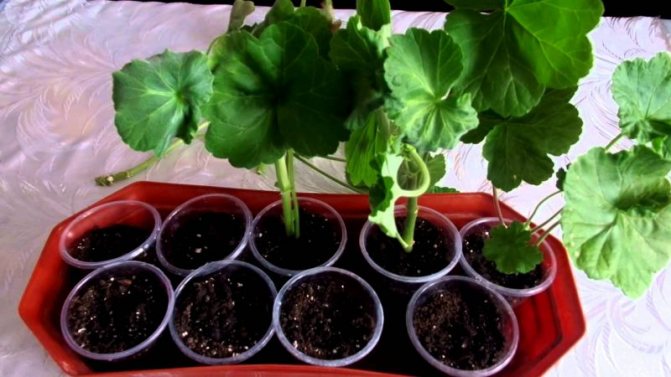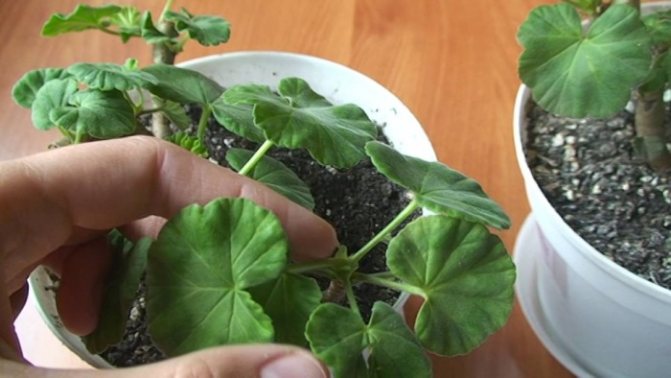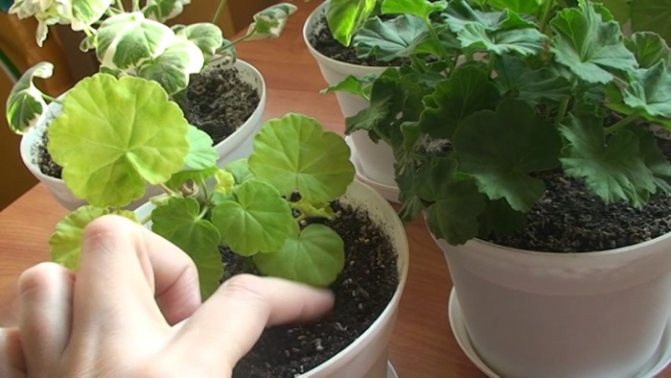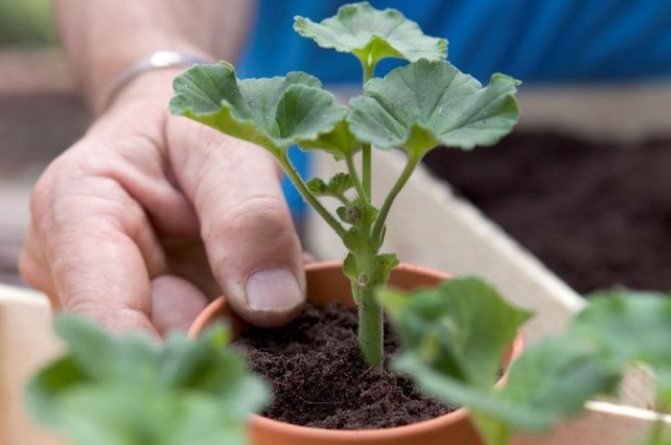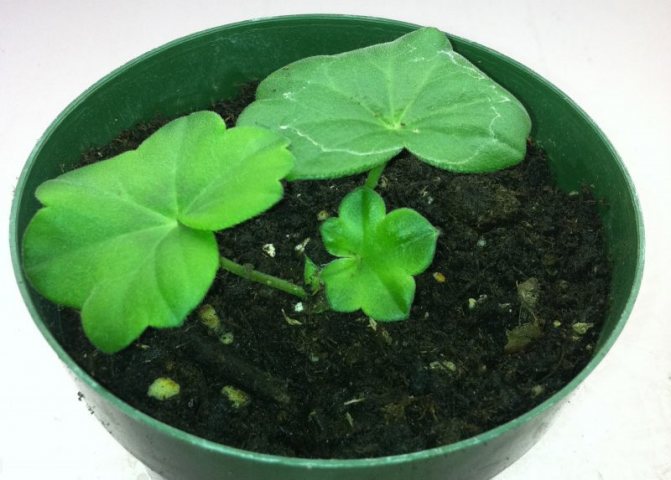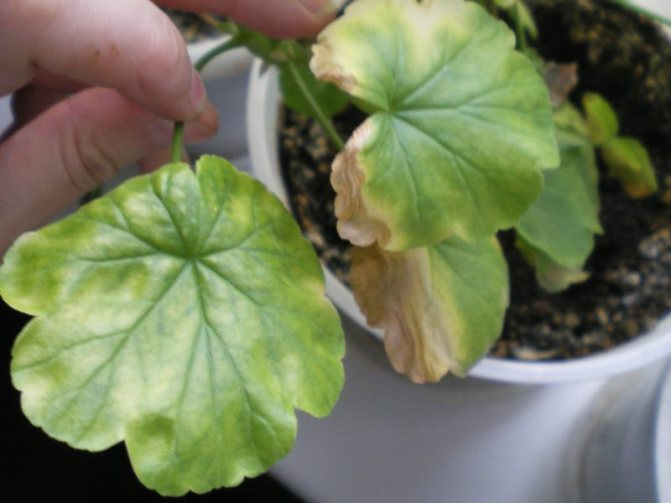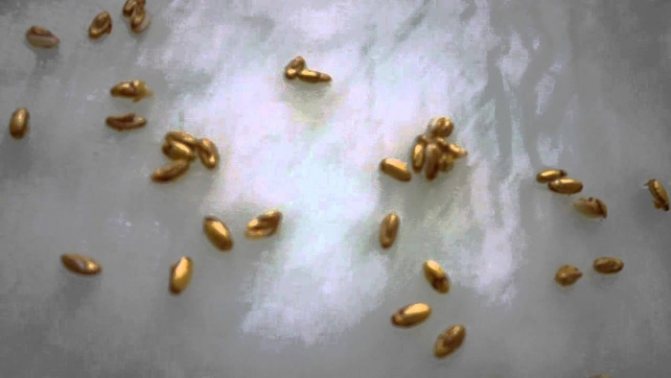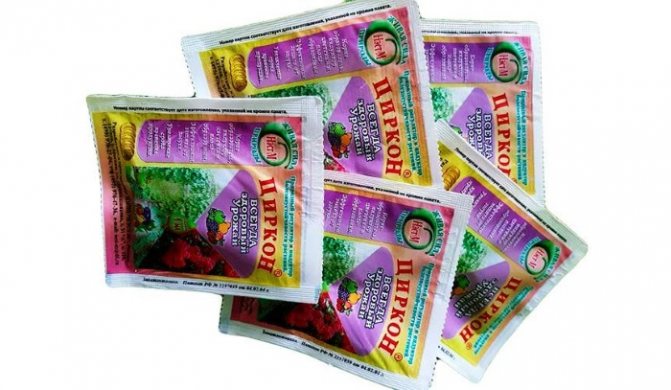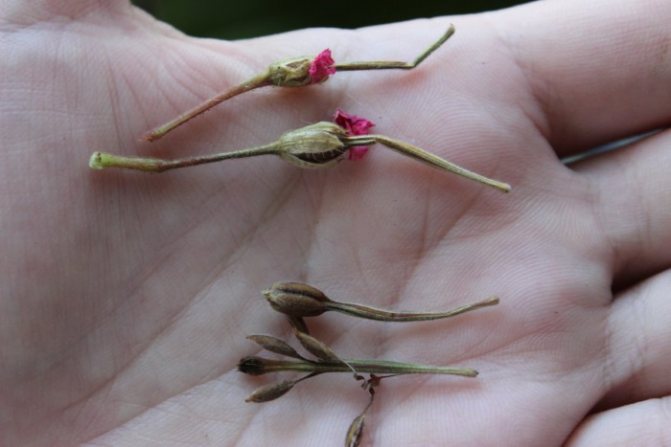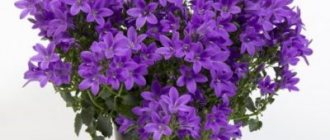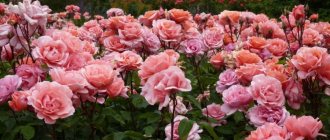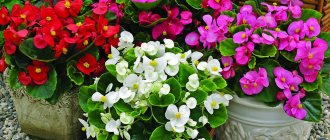Geranium (pelargonium) is unpretentious to care for, but often in indoor conditions it forms an abundance of long, non-leafy stems, on which flowers almost do not appear. But you can even form a lush, green and richly flowering bush from such a plant.
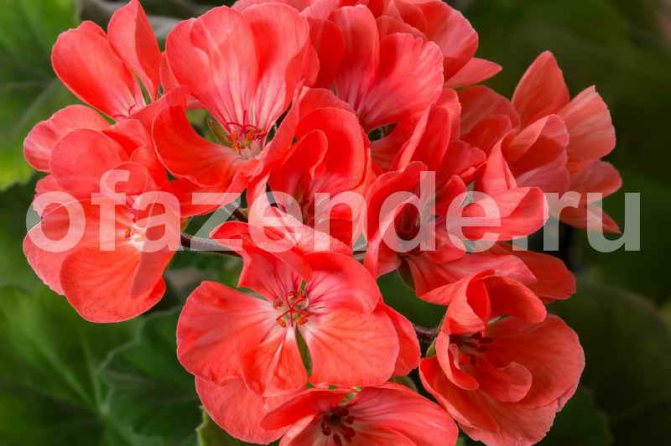
Growing geranium
What is this plant
Geranium first appeared in the 16th-17th centuries in Europe. Since 1789, this plant began to be called pelargonium, but for ordinary people it is still more customary to call this flower "geranium". The flower is classified as perennial and annual (here it all depends on the variety) rhizome plants. The stem height can reach seventy centimeters and, most often, has a large number of branches. Flowers are solitary or can be collected in inflorescences. Leaves cover small villi and can be of a wide variety of shapes and shades (their colors range from dark to light green). There are a huge number of varieties of geraniums: unique, zonal, garden, fragrant, royal and many others. Some grow well at home, while others thrive in gardens.
Pelargonium: common species, varieties and nuances of their cultivation
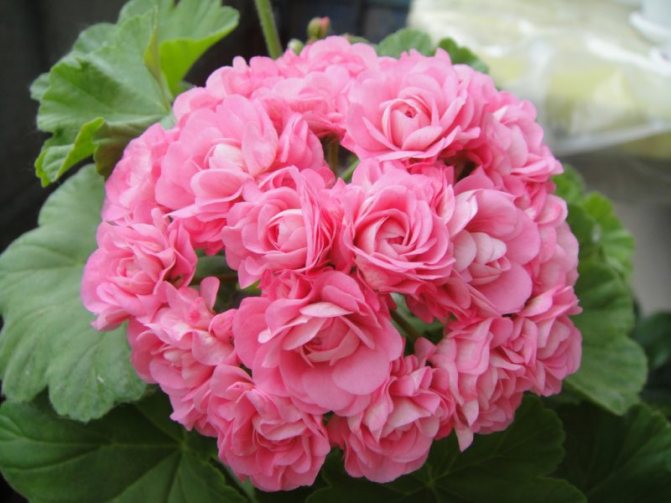

The popular potted flower is loved by gardeners for the following features:
- drought resistance;
- long flowering period;
- a variety of shapes and sizes of flowers;
- undemanding to high levels of air humidity.
In the wild, the genus of the Geranium family numbers about 350 species, of which only a few are cultivated in culture.
Pelargonium zonal
The most popular and numerous species, numbering more than 75 thousand varieties. The name of the variety is due to the non-standard color of the lowered leaf plates - they have a well-distinguishable zone.
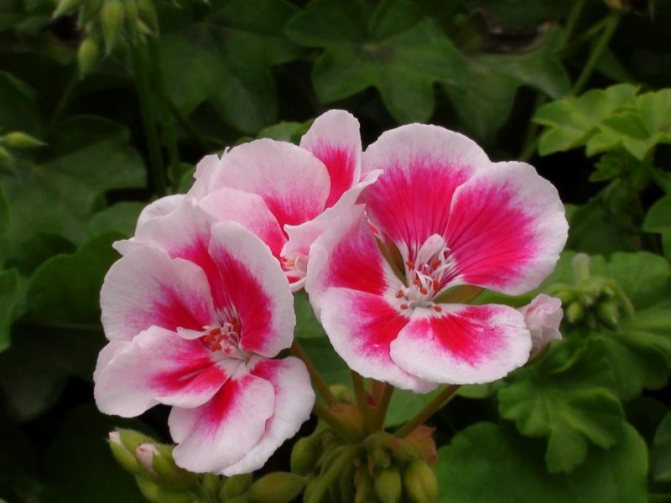

Varieties are most often classified by the number of inflorescence petals (simple, double, semi-double) and by the shape of the flower:
- Rosaceae - a group with flowers like a rose, appeared in culture at the end of the 18th century. A prominent representative is Appleblossum Rosebud.
- Tulip-shaped - a characteristic feature of the densely blooming group are flowers in the form of unopened tulip buds.
- Carnation - thanks to carved petals, large flowers resemble garden carnation inflorescences.
- Star-shaped - the flowers and leaf plates of the group have a pointed shape, which is the reason for the name.
- Cactus are a rare group with elongated, twisted petals that resemble cactus dahlias.
Pelargonium royal
The most capricious species, represented by branching bushes up to half a meter in height. Powerful shoots during the flowering period, which lasts up to 4 months, are crowned with large flowers with corrugated edges of the petals, painted in white, burgundy and purple with stains.
Pelargonium ampelous
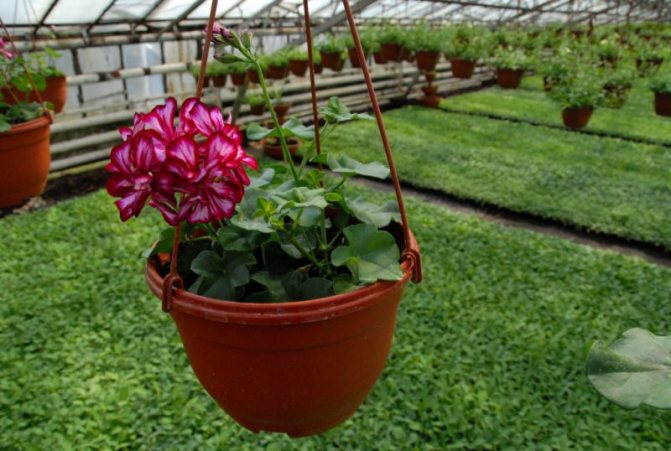

The variety with hanging shoots up to 90 cm in length is represented by such a spectacular and decorative subspecies as Pelargonium ivy, which is often used for landscaping balconies and terraces. During flowering, plants can have cactus-shaped and star-shaped flowers of various colors.
Indoor geraniums "Angels"
Hybrids are obtained by crossing curly and royal pelargonium.Unlike royal pelargonium, hybrid plants have an ampelous bush shape, smaller flowers and leaf plates.
Succulent pelargonium
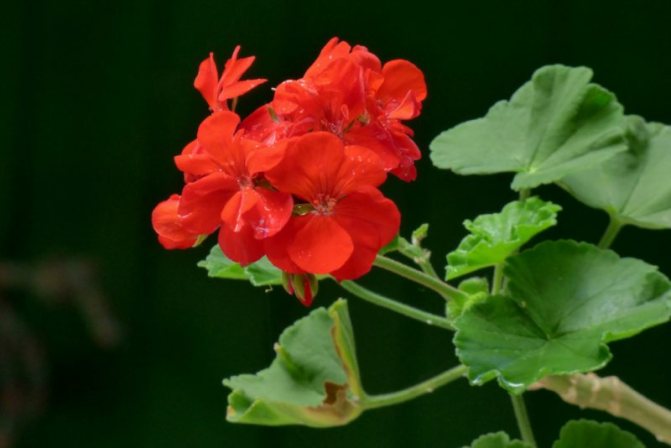

African representatives of this group come in a variety of shapes, sizes and colors. However, they also have a common, characteristic feature, which is the thick stems designed to accumulate moisture.
Scented Pelargonium
A species that combines varieties with fragrant leaves that have different aromas - peach, pineapple, grapefruit and others. This feature became the reason for the popularity of the flower, since the simple, small flowers of the variety do not represent any special decorative value.
Indoor geraniums "Unicums"
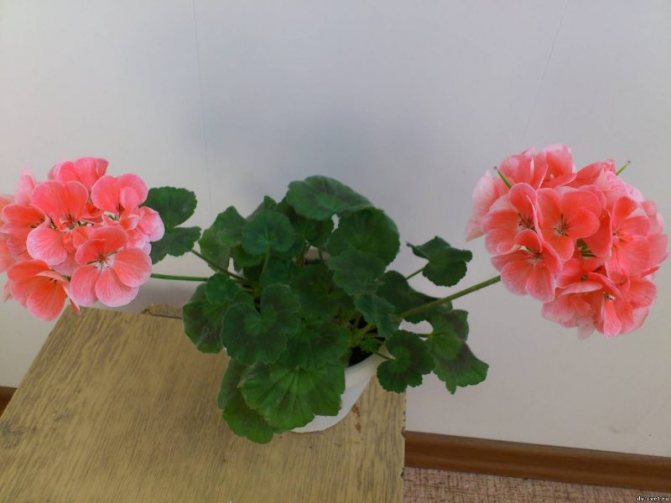

In culture, resulting from the crossing of royal and brilliant pelargonium, the hybrid has been cultivated since the 18th century. Bushes poorly branching without outside interference are crowned with medium-sized flowers of various colors.
Growing process
First, you can purchase a hardened plant. Secondly, you can grow geraniums from cuttings or seeds. Let's dwell on each method in more detail.
When growing pelargonium from a cuttings, you should adhere to the following steps:
- The upper shoots are ideal for cuttings, whose optimum height is seven to nine centimeters. The branch should have up to seven medium-sized leaves;
- Pruning of branches is carried out under the bud itself, and it is better to remove a few lower leaves;
- After that, the workpiece is placed in water until a root appears or dipped in a mixture that stimulates growth. Some gardeners dry out the cut in order to immediately place the branch in the ground. The ideal soil is a mixture of earth, peat, and sand, taken in equal proportions;
- Too much land is not required, so a small pot is best suited (if it is too large, the plant will not bloom);
- Once the geranium is rooted, you can transfer it to a larger pot.
You can also grow pelargonium from seed, it is not too difficult, the main thing is to follow the following algorithm:
- Seeds do not require special preparation, they take root without it. We prepare containers for planting. For example, a shallow plastic container will do;
- The container is filled with a peat mixture, which is watered;
- The seeds are placed in the soil five centimeters apart. From above they are sprinkled with earth, and everything is sprayed from a spray bottle;
- To create a special microclimate, the container can be tightened with cling film;
- A month later, the first shoots will begin to appear. At this time, the film is removed;
- After the sprouts are strong, they can be planted in different pots. It is better to select specimens, since they will give excellent shoots.
The optimum temperature at which the geranium feels great is eighteen to twenty degrees, the minimum is at least twelve, otherwise the plant will simply freeze.
Features of planting material
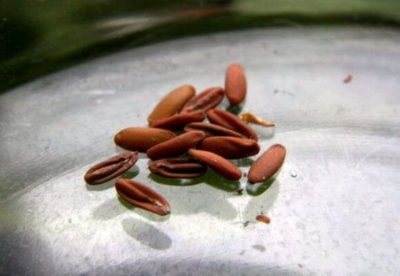

In appearance, the flower seeds resemble coffee grains. They are located in the seed box. One of the sides is slightly convex, and the other is flat, with a pronounced dividing line. The color is rich brown. A small downy umbrella acts as a dense shell covering the seeds. After ripening, the capsule bursts, and fruits appear in its place.
When flowers appear on pelargonium, it is worth taking care of the seeds. A variant of artificial pollination is possible. You can transfer pollen using a needle or tweezers. In the very center of the plant there are 10 stamens and 1 pistil with a stigma. It is necessary to carefully take pollen from one flower and transfer it to the stigma of the pistil of another, which should have bloomed a few days before. Pollination by this method can be done many times.
Now how to collect ripe seeds. After pollination has occurred, after 4-5 days, the column begins to grow. The fruit-capsule is pointed and elongated. The fruit will burst immediately after the seeds are ripe. Slightly oblong seeds, which are covered with light villi, hang on thin and dense threads.
Harvesting takes place when the grains are fully ripe. Dry open bolls are considered to be a witness of maturity.
Attention! It is necessary to ensure that the seeds do not fall out and do not germinate, because in this case, their storage will be impossible.
We offer you to watch a video about the collection and features of planting material:
Form a bush
If you do not take any action, then the geranium will strive upward, which does not look aesthetically pleasing. To create an attractive bush, you can do the following:
- If you want to get a dense and low bush, then the upper shoots must be removed. Use sharp scissors to trim. In this case, almost the entire branch is removed, leaving only a stump;
- To make the stems more branched, it is worth getting rid of young shoots;
- It is necessary to carry out pinching on the eighth to tenth leaf in the upper region and approximately on the sixth to eighth leaf in the lateral shoots;
- Leaves that have turned yellow are also removed immediately. If everything is left unchanged, then the flower will spend all available nutrients on them;
- In order for the leaves of pelargonium to grow evenly, it must be turned over from time to time. Only in this case, each side will receive the required amount of sunlight.
Features of planting in open ground
Perennial garden geraniums will decorate your backyard for many years if you plant it correctly and provide quality care for it. Otherwise, the plant will be unadapted to cold weather and may die in winter. It is recommended to start planting pelargonium with the arrival of spring.
For a full result, follow these rules:
- you need to start by loosening the earth - dig up the selected area;
- sprinkle the topsoil with compost and then stir. Thus, you will saturate the soil with the necessary nutrients;
- dig small depressions for geraniums, the hole should be about 25 cm deep;
- place a scion here and compact the sprinkled earth. After that, you need to thoroughly moisten the pelargonium.
Do not forget that the site for planting such a plant must be selected thoroughly. It must be well lit, otherwise the geranium will receive too little light.
Where to locate
The homeland of this beauty is South America. Therefore, the flower needs a lot of light, and direct sunlight will not harm it. So you can safely place pelargonium on the south side. Lighting should be at least fourteen hours a day. In the cold season, this will require additional lighting. The first symptom indicating a lack of light is the formation of a red border along the edges of the leaves (of course, if this is not a feature of the variety). In this case, lighting has an effect on the duration of flowering.
When to sow pelargonium?
Indoor geranium can be sown at any time of the year. In those situations when plants are transplanted into open ground for the summer, sowing is best done in December - January, then the seedlings will get strong enough by summer and will please with flowering in June.
Flowering occurs in 5-10 months.
Important! When sowing seeds in autumn and winter, the sprouts will need additional lighting for 10 hours. When sowing in March, additional lighting of the seedlings is not required.
How to water
This houseplant is watered quite often, especially in the warm season, when geraniums grow rapidly or bloom. Winter is the time when the plant is at rest. During this period, the intensity of irrigation decreases, and the ground should be slightly damp.When a characteristic rotten smell or gray mold appears on the leaves, it is necessary to reduce watering, as this is a sign of an excess of moisture. In this situation, it is worth waiting for the soil to dry and not watering the flower at all, or transplanting the plant into a dry substrate. Do not forget that overdried soil will not have such a detrimental effect as an excess of moisture that accumulates in the soil. In hot weather, pelargonium is watered once a day. With little evaporation and medium temperatures, watering is carried out every two days. An important condition is also the creation of high-quality drainage.
Disease and pest control
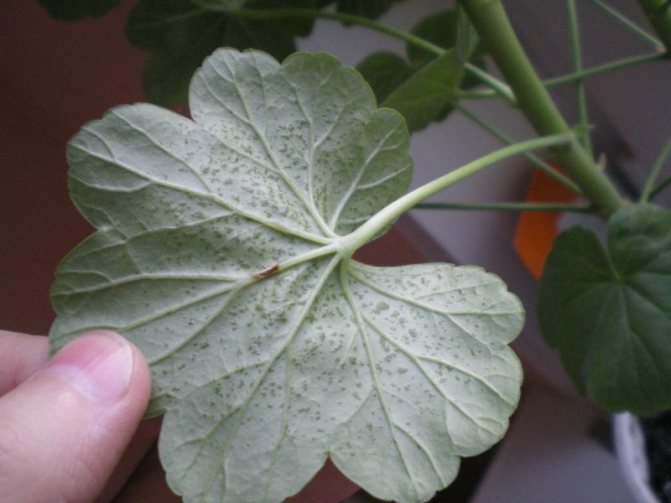

Delicate, beautiful bushes of an exotic plant are susceptible to the following diseases:
- blackleg;
- gray rot;
- rust;
- mosaic.
If the first three are subject to fungicide treatment, then the last viral disease cannot be cured. When patterned spots appear, the affected specimen should be burned, and the container should be disinfected.
Pests rarely feed on the plant, but sometimes whiteflies and aphids can be observed on leaf plates and shoots. Spraying pelargonium with an insecticidal solution will help to cope with harmful insects.
Soil and fertilizers
- If we talk about the soil, then we can stop at a universal mixture. In any case, a prerequisite for the land is its nutritional value. It is also important to provide drainage, which will not allow moisture to stagnate (to prevent this from happening, it is recommended to periodically loosen the soil). This should be done as carefully as possible, so as not to harm the root;
- Not only universal fertilizers are suitable, but also special ones designed specifically for pelargonium. This plant prefers complementary foods of an organic or mineral nature. The mixture should contain phosphorus and potassium. Top dressing is carried out once a month.
Home care
In order for an exotic plant to please the grower with long and abundant flowering, it is necessary to carry out comprehensive care for pelargonium.
Lighting and location
Pelargonium is such a photophilous plant that it even needs an open sun. If possible, then you can place a flower pot on the windowsill of the south window, and in the summertime move it to fresh air - balcony, street.
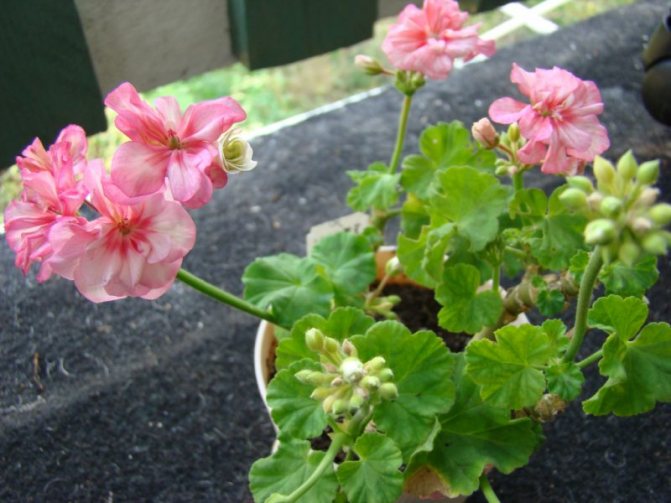

Important! Despite its light-loving nature, pelargonium grows normally near the northern windows, but on the condition that it is provided with a long daylight hours, which in winter is possible only with the installation of fluorescent lamps.
Requirement for soil and pot
Pelargonium is undemanding to soil fertility and aeration.
Feels good on soil with a neutral and slightly alkaline reaction, which can be achieved by adding ash. A pot with good drainage for the plant is selected with a small diameter so that the roots are flush with the wall. The tight capacity allows you to get a lush flowering, which is impossible to wait in a spacious pot.
Temperature and humidity
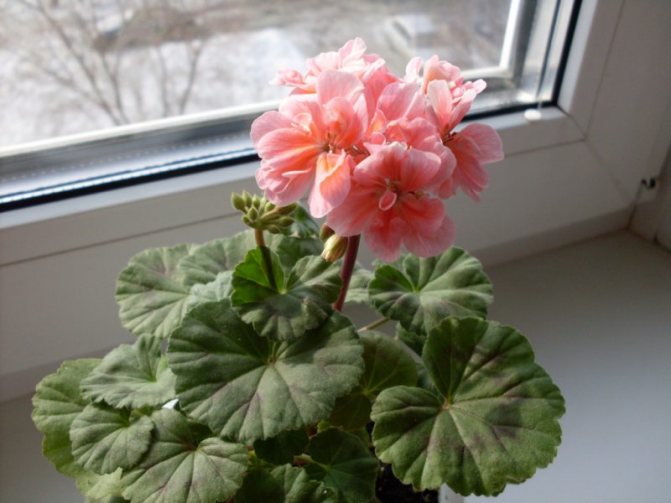

During the year, the temperature regime for pelargonium should change depending on the phases of flower development:
- During the period of active growth, which occurs in the spring and summer, the flower is kept at a temperature of 22-25 ° C.
- In the resting phase, the temperature drops to 10-13 ° C.
Spraying with pelargonium is not required. It can withstand dry air without any problems, except for the only variety - royal pelargonium. When growing a plant of this type, it is worth placing a container with water next to it or installing a stationary air humidifier.
Watering the plant
A drought-resistant plant does not like waterlogging of the soil, therefore, in the summer, each new portion of water is poured under the crop only after the earthen coma has dried by ⅔.In winter, watering is carried out in such a way as to simply prevent the roots from drying out.
Top dressing and fertilization
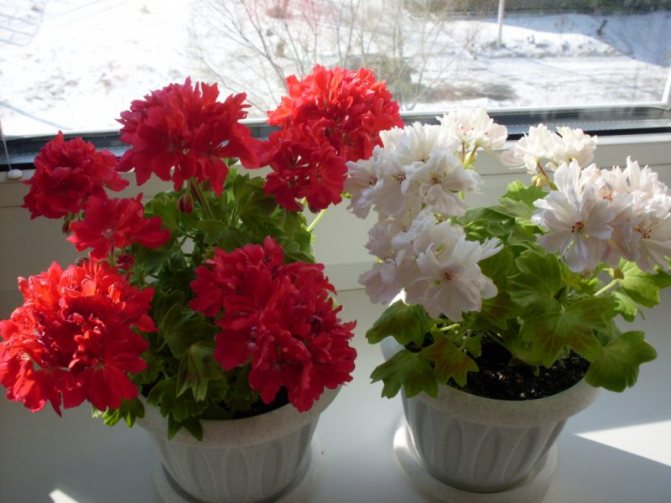

Since the fertility of the soil is not of key importance for the full development of pelargonium, the plant is fed only 2-3 times throughout the season. For top dressing, liquid mineral fertilizers for flowering plants are used, which include phosphorus and potassium. Organic fertilizers with a readily available form of nitrogen should not be applied because of the high risk of burns by the roots of the plant.
Pruning
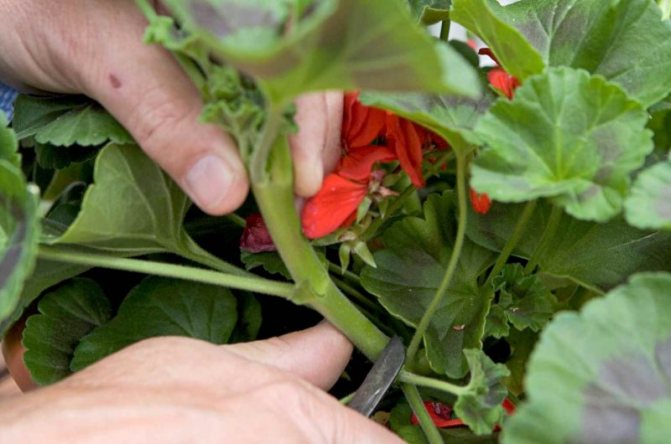

To obtain a lush bush, the shoots are annually shortened to 2-3 internodes. Yellowed and dried leaf plates are removed with a sharp knife so that the base of the petiole remains on the shoot. After the procedure, the cut sites are disinfected using charcoal or activated carbon.
Attention! Do not rush to throw out the trimmed shoots, they can be used as apical cuttings for propagation.
Transfer
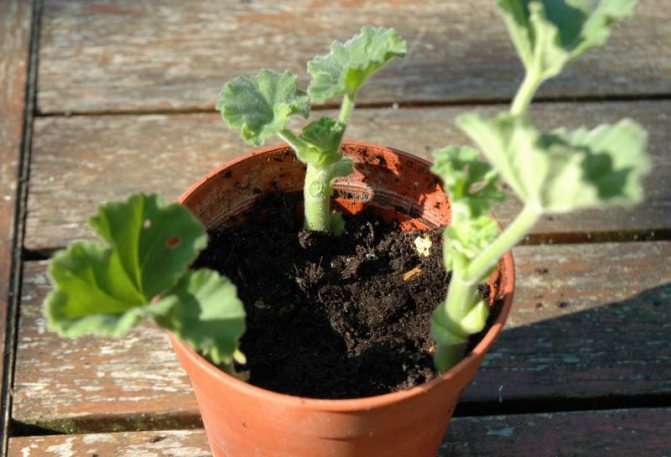

The frequency of transplanting depends on the age of the plant:
- Young specimens are transplanted annually.
- Adult plants are subject to the procedure after the roots appear in the drainage holes.
The procedure is carried out according to the standard algorithm:
- A pot of slightly larger diameter is selected in comparison with the previous one.
- A good drainage layer is placed on the bottom to prevent root rot from developing.
- The drainage is hammered by soil, onto which a flower with an old earthen lump rolls over.
- After 14 days, the flower is fertilized with phosphorus-potassium fertilizers with a small addition of nitrogen to stimulate branching.
Care for geraniums in the fall, preparation for winter
In order for a delicate flower to delight the grower with lush flowering, he needs to provide a state of calm, for which the culture is preparing in the fall.
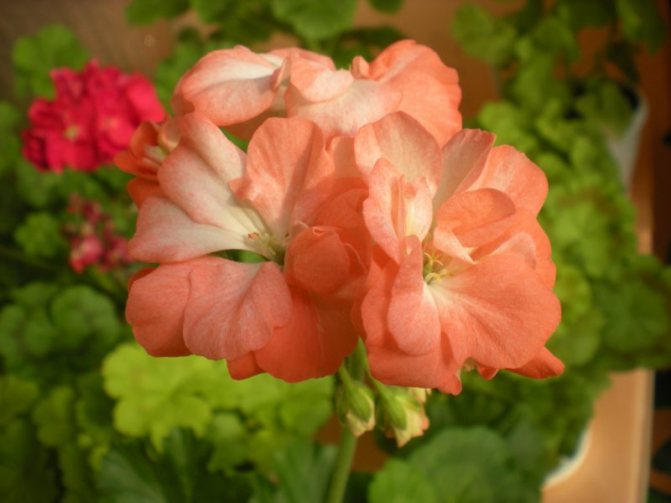

Before the onset of cold weather, the plant moves to a cooler place with diffused light, after which watering is reduced and all yellowed and dried leaves are removed.
Transfer
- In the case when the geranium has become too large, and the pot no longer fits in size, it is necessary to take a container several centimeters larger and place the plant in it. The roots are left alone. The earthy clod that surrounds them is covered with fresh soil;
- Do not choose a pot that is too large, the geranium will stop blooming, and all the nutrients will be sent to the leaves;
- The optimal time for transplanting is considered the end of winter or the beginning of spring, that is, before flowering begins.
Photo
In the photo below you can see what the seed looks like.
Now it's worth examining the alarms and the reasons for their appearance:
- The leaves begin to turn yellow or fall off - this may indicate that the geranium does not have enough moisture;
- Too warm air can cause no flowering;
- If the edges of the leaves begin to turn red or take on a different shade, most likely the plant is freezing;
- In the case when the leaves are rotting - moderate the amount of incoming water;
- If there are few of them, and the stems are almost bare, move the geraniums to a sunnier place;
- A gray bloom appearing on the leaves is mold;
- Bubbles - excess moisture.
Breeding secrets
Reproduction manipulation is best done in autumn or spring. However, experienced florists recommend propagating the flower in the spring, since at this time Geranium has the greatest ability to take root and quickly take root.
Preparation
If you decide to propagate a flower by shoots, then you need to prepare it in advance... To begin with, 15 days before dividing an adult plant, it must be fed with wood ash (preparation method: dilute two tablespoons in 1000 ml of water). After feeding, the flowerpot is removed to a dimly lit place, the soil moisture is completely stopped. Such manipulation will give an impetus for the formation of young processes.
Cuttings
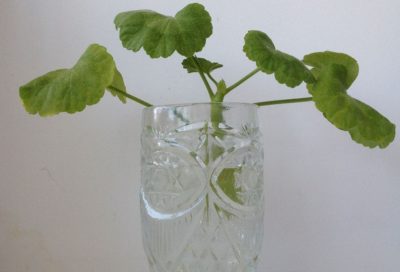

Use a well-sharpened knife to cut off the appendix of the geranium.This process should have at least 3 leaves. If we talk about the length, then it should be about 5-7 centimeters.- If no young shoots are observed on an adult plant, their growth can be stimulated by radical methods. To do this, on the shoot around the whole circle, you need to make a kind of cuts. After about 15 days, tubercles will appear at the site of the incisions, from which young processes will then grow.
- The cuttings are dried for 2-3 hours, and after that the cuts are sprinkled with crushed coal.
Reference! Additionally, you can treat the cuttings with a growth stimulant (usually Kornevin is used for this).
We suggest you watch a video about geranium cuttings:
Dividing the bush
This method is best combined with a transplant. At this time, you can also carry out pruning. If you divide the bush in the fall, then many shoots can be cut down to the hemp. This will allow the plant not to waste energy on maintaining the life of many leaves and shoots and save them for the new season.
You need to divide the bush so that on each part there are several healthy buds.... After removing the flower from the soil, it must be examined for diseases and pests. The divided plant is planted in prepared soil. It is not recommended to tamp it in this case.
Seeds
To see geranium bloom in mid-spring, you need to sow seeds in early February. To do this, you need to prepare a nutritious soil (usually peat is mixed with perlite in equal proportions).
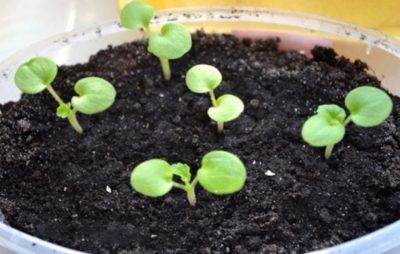

Experienced growers say that there is no need to dip the planting material in growth stimulants. However, they it is recommended to plant each seed in a separate container.
- You need to place the seeds in a slightly damp substrate.
- Then the planting material is crushed with soil and again sprayed with water at room temperature from a spray bottle.
- Cover with foil or glass on top to create a greenhouse effect.
Reference! When the first shoots appear, it will be necessary to periodically open the film so that the young flowers are tempered.
The timing of seed ascent for each variety is different. But often within 10 days all viable seedlings germinate.
If the florist sowed seeds in a common container, he it is necessary to dive the shoots immediately after the appearance of the first pair of leaves... For seating, a container with a diameter of 7 centimeters is selected. After removing the seedlings from the first soil, the roots are completely cleaned of the soil.
The secret of flowering
You have created the necessary conditions, you take proper care of it, you feed on time and organized additional lighting, but the geranium still refuses to bloom. What to do in this situation? Let's reveal the secret. Pelargonium begins to bloom only when there is too little room for the roots in the pot. Sometimes gardeners note that the roots have entwined the whole earth and are trying to quickly transplant geraniums into more spacious dishes. And she, ungrateful, still does not bloom, and instead of buds, a more powerful root system appears.
Soil selection
Sowing pelargonium with seeds is carried out in a loose clay substrate. Buy ready-made soil or make it yourself from nutrients in the following proportions:
- peat + sand + turf (1: 1: 2);
- sand + peat (1: 1);
- peat + perlite (1: 1).
Before planting geraniums, disinfect the substrate in one of the following ways:
- Ignite the soil in the oven for 40 minutes at a temperature of 100-120 degrees.
- Steam in the microwave for 5 minutes at maximum setting.
- Treat the soil with boiling water - the soil mixture is laid out on a baking sheet in a thin layer and spilled with boiling water.
- Fungicides ("Fitosporin-M", Bordeaux mixture or copper sulphate, "Trichodermin", "Bactofit", "Phytocid-M") or manganese solution (2 g per 2 liters of water) are suitable for disinfecting the earth.
Useful Tips
- If you cannot choose a fertilizer for pelargonium, pay attention to those products that contain o;
- From the age of two, the pot size remains the same when transplanting. A flower can delight people for about ten years, and even more, the main thing is to provide suitable conditions;
- Dried leaves should not be removed by hand, as there is a possibility of harm to the trunk. Use a sharp, sterile knife for this purpose;
- If climatic conditions permit, then in spring the plant can be planted in the garden. In this case, it is better not to remove the geranium from the pot, but to drop it in with it. If this is not done, then in the fall you will have to call an excavator for help to extract it.
How to prepare pelargonium seeds
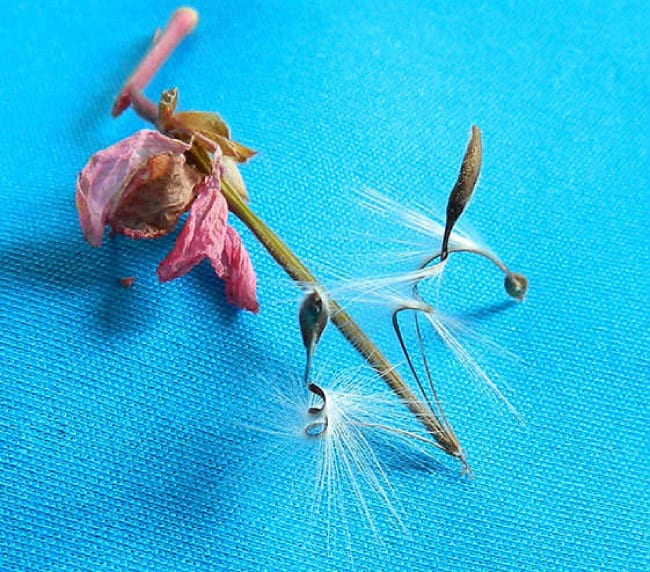

Pelargonium seeds
Red, white, fragrant or ampelous geraniums are suitable for growing at home. The seeds are harvested after the flowering period and allowed to ripen. Seed readiness sign - brown color with a matte sheen. Choose large, oblong seeds, with small depressions on the sides, and a dense leathery shell.
Get rid of flattened, small, twisted, stained seeds. Healthy bushes are not made from such material. Planting material preparation rules:
- Store seeds where it is dry and dark, where insects and other pests cannot penetrate.
- Scarify the seeds: remove the shell from them to ensure unimpeded access of nutrients. Rub each seed with a fine to medium-grained sandpaper.
- Treat the seeds with phytohormones "Zircon" or "Epin".
- Soak the material for 20 minutes in a weak manganese solution to kill fungi and bacteria.
- Fill the seeds with warm water for 2-3 hours.
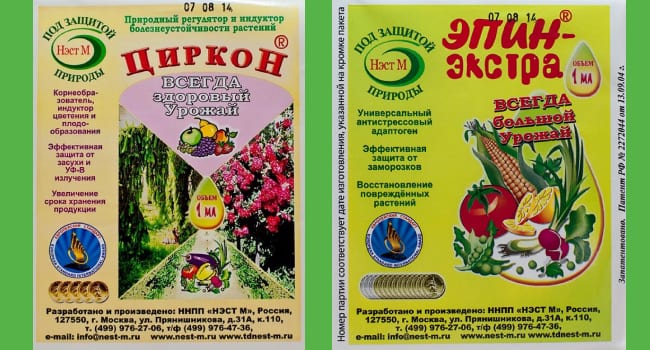

Plant growth stimulants
How to choose the right geranium soil
Despite the fact that the plant is unpretentious and undemanding to care for, the soil must be chosen the right one in order to see not only a healthy and flowering bush in the future, but also to be sure that the plant has good immunity.
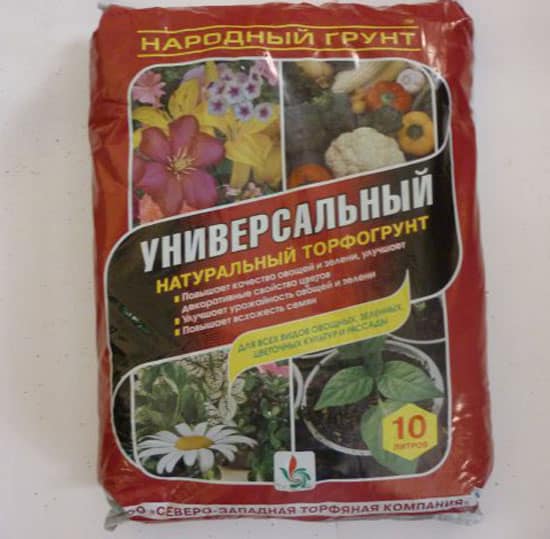

- The main condition for this flower is that the soil should be fresh, not previously used, loose and light. It is imperative to put a layer of drainage in each flowerpot. Geranium does not tolerate moisture stagnation in the root system.
- If there is still little experience in floriculture, then it is better to purchase a ready-made universal substrate and supplement it with some components: perlite, vermiculite and pre-washed river sand. It is important to mix all the components until a homogeneous composition, and then you can plant a flower.
- When choosing a ready-made substrate, make sure that it is free of mold and insects, and you also need to determine: fresh or old soil. The second will turn into a lump when compressed, and a high-quality and usable one will crumble.
- Peat soil must necessarily be part of the soil mixture, since it brings the necessary looseness and lightness.
- If you have experience in transplanting and planting plants, then prepare the soil yourself: mix 8 parts of sod land, 2 parts of humus, 1 part of sand and 1 part of peat.
- Another option: ready-made soil (you can use "Krepysh", "Gardener", "Gardener", "Universal" agro) - 10 shares, Sfagnum moss, cut into pieces - 1 share, sand - 1 share and half of humus. If you buy a universal soil "Terra Vita", then humus is already included in the composition.
The main characteristics of the finished substrate
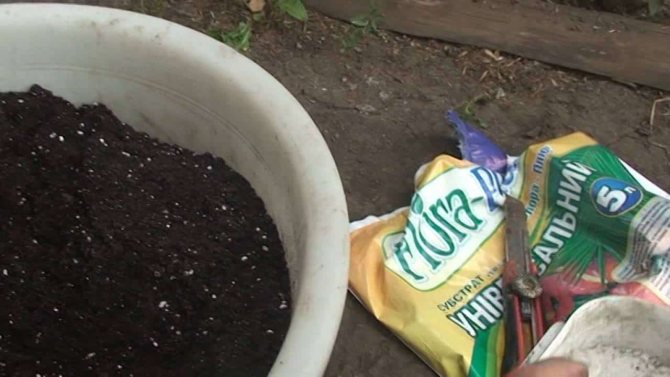

- The soil mixture should be porous and loose, airy.
- Good moisture permeability is imperative, but the required amount of water must remain. This is helped by the Sfagnum moss, which absorbs moisture, and then gradually transfers it to the geranium root system. Thus, moisture stagnation is excluded.
- A neutral acidity level is a prerequisite for the normal growth and development of geraniums.
- The presence of the whole complex of nutrients, micro and macro elements in the soil.
After the planting procedure, some flower growers do quarantine for the flower for about a month, do not put it next to the rest of the houseplants. If there are no spores of harmful insects or viral bacteria in the soil, then the geranium is installed in a permanent place.
What soil composition is needed?
Geranium is a plant that is not demanding on the soil. But you shouldn't buy anyhow. It is advisable to follow some recommendations when selecting it. So, what kind of soil should this houseplant be planted in?
Most often growers buy a universal primer, adding the necessary components to it... Vermiculite, river sand and perlite are suitable. All components are mixed and then poured into a pot of geraniums. The main thing is to make sure that there are no mold and insects in the ground.
Sometimes peat is added to the universal soil, which contributes to the growth and development of culture.
History and interesting facts
Geranium is a perennial or annual plant belonging to the geranium family, which has more than 400 species and forms. Its homeland is hot South Africa, but pelargonium grows almost throughout the Northern Hemisphere, in regions with a temperate climate and mountainous subtropical regions. In Europe, it appeared in the 15-16th century, and immediately fell in love with flower lovers. The name geranium comes from the Greek word geranos, which means crane.
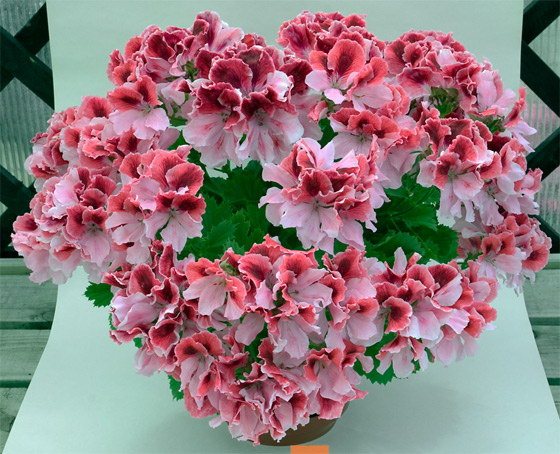

Pelargonium
It should be noted that this beautiful plant is grown not only for decorative purposes. It has many beneficial properties: it can neutralize toxins and harmful substances, relieve headaches, and also stop bleeding and heal wounds. It is recommended to keep geranium in rooms where hypertensive patients live, as well as people suffering from nervous system disorders and insomnia.
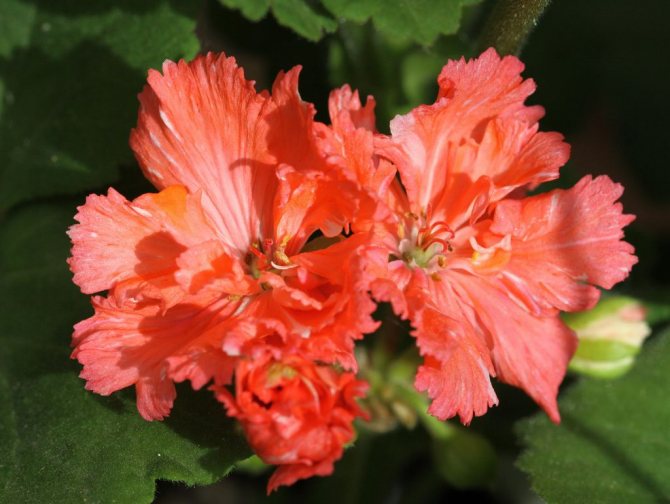

Pelargonium zonal
In the old days, pelargonium was endowed with not only healing, but also mystical properties. It was believed that this plant scares away snakes, so it was planted around houses in those places where reptiles are found in large numbers. In addition, fragrant sachets are often made from pink geranium flowers and placed next to worn things - in order to protect themselves from the evil eye, and at the same time scare away moths. But cat lovers with this plant should be careful. As you know, cats love to feast on home flowers, and the leaves of pelargonium contain poisonous substances that are extremely dangerous for animals.
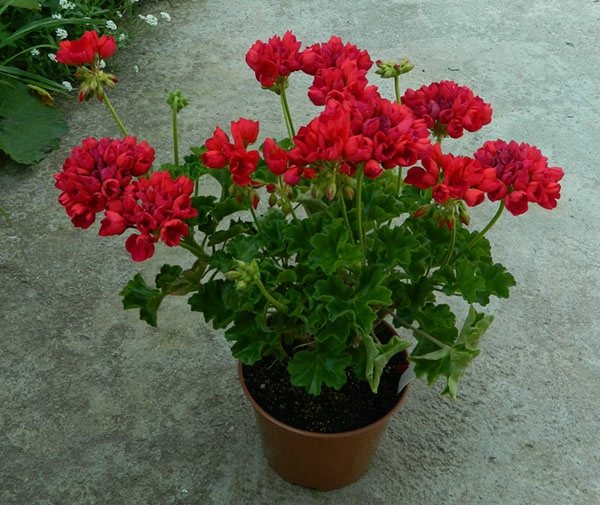

Red blooming geranium
What land is needed for geranium
To find the perfect geranium soil, pay attention to the following characteristics:
- Looseness of the soil. Its breathability depends on it.
- The ability to pass and retain moisture.
- Nutrient content (nitrogen, phosphorus, potassium). In order for pelargonium to develop favorably, it is advisable to use moderately nutritious soil. In a well-fertilized soil, the plant can begin to build up a green mass of leaves.
- Soil acidity. For pelargonium, it is recommended to choose slightly acidic or neutral soil.
- The mechanical composition of the soil. Squeeze a little damp earth in your hand - suitable soil will crumble, poor-quality soil will collapse into a dense lump.
An important aspect is the composition of the soil. To ensure friability and moisture permeability, high-moor peat is an indispensable base.
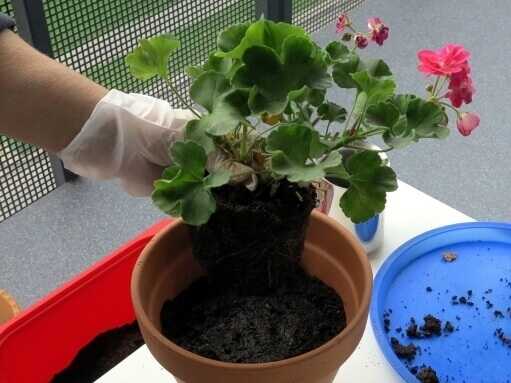

land for geranium photos
Note! Its positive properties are beneficial only under the condition of regular watering and feeding.
An environmentally friendly fertilizer, dolomite flour, based on peat, saturates the soil with magnesium and reduces acidity. In inexpensive substrates, dolomite chips are replaced by chalk, but chalk is not a source of nutrients. Additional components are vermiculite, perlite, charcoal, sand.
A flower transplant should be carried out annually, since the land for pelargonium must be constantly renewed.
Preparing a substrate for planting a flower
Preparing the substrate and planting pelargonium is a simple process, if you follow some rules:
- Before preparing the substrate, you must choose a container for planting. If you reuse the pot, it must be washed and disinfected.
- Place a good drain on the bottom of the container. You can use expanded clay, pebbles, crushed stone, broken brick, etc. A quarter of the volume of the pot or flowerpot is taken to the drainage layer.
- Next, you need to pick up a neutral or slightly acidic soil. Air permeability and water permeability are important conditions.
- The substrate should contain: turf, leafy soil, peat, sand, charcoal. You can buy potting mix at a flower shop or make your own.
- A couple of weeks before planting the flower, you can sterilize the substrate. To do this, place the soil mixture in an oven at 80C or in a water bath.
- For planting a flower, it is best to choose a moderately fertilized soil. Once every few months, you need to feed the geranium with liquid fertilizers.
- The last stage is watering with distilled or boiled settled water.
Drainage
In addition to the drainage holes in the pot, geraniums are vital for drainage in the form of a layer of bulk materials. Usually a layer of 2-3 cm is placed on the bottom of the container.The materials for creating drainage can be as follows:
- Expanded clay. Expanded clay gravel is a piece of fired clay. Due to its porous structure, it perfectly absorbs excess moisture. The advantage of expanded clay is the ability to accumulate moisture and give it to the substrate as needed. It is also used as drainage due to its low weight. Some manufacturers offer expanded clay, enriched with trace elements.
- Shards of pottery or brick chips. Drainage from fragments of earthenware, broken brick can be prepared by yourself. The layer of drainage material must be sprinkled with sand.
- Styrofoam. This material is recommended for use with indoor plant hydrogel, which can absorb large amounts of water. The downside of the material is the risk of geranium roots growing into the foam.
- Coal. The antiseptic properties of charcoal are the main advantages of this drainage material.
- Vermiculite. Can be purchased exclusively at the flower shop. High water absorption capacity is the most valuable property of vermiculite.
in a pot, geraniums are vital drainage photo
Note! Geranium does not tolerate stagnant water in a pot or flowerpot. Excessive watering leads to yellowing of the leaves, rotting and death of pelargonium. Therefore, the plant needs a high-quality drainage system.
Clay materials can be reused after transplanting. Be sure to rinse and disinfect them with a manganese solution.
Important! Choose a material that is not susceptible to rotting and the spread of pathogenic bacteria.
The right time
When can you transplant an indoor flower? It's believed that the best time for transplanting geraniums is spring. But if for some reason it was not possible to transplant the plant in the spring, you can do it in summer, autumn or even winter.
Yes, in winter the flower will take longer to take root, since all active processes slow down at this time, but if an immediate transplant is required, for example, in order to preserve the viability of the geranium, then it is better not to wait for an opportune moment, but to provide assistance as soon as possible.
Methods for planting geranium seeds
Some gardeners do not like to take the easy path, choosing which is more difficult. Therefore, they decide to breed geraniums with seeds. In order to implement our plans, it is necessary to carefully select the planting material, it must be of high quality. If the seeds turn out to be old or rotten, then you can not wait for seedlings.After that, you will need to take a pallet or other wide vessel, fill it with soil, water it a little, scatter seeds on top and cover the greenhouse with a transparent film. All this must be put in a warm place. Having noticed the first sprouts, it will be possible to remove the film and wait for the sheet plates to appear. After that, young pelargonium is allowed to be transplanted into a separate pot.
When can a flower be propagated in this way?
It is possible to propagate geranium by cuttings at least all year round, but flower growers are of the opinion that it is better not to touch the plant during the dormant period (mid-autumn - late winter), because at this time it is very vulnerable, and therefore the mother geranium may die. Therefore, the most optimal period is spring, when the growing season of geranium begins and it is still full of the previously accumulated strength.
Reproduction of a plant such as geranium is a fairly simple process that anyone who undertakes it can do. And correct and timely care for a rooted plant will help it delight the eye with its attractive and aesthetic appearance.
If you find an error, please select a piece of text and press Ctrl + Enter.
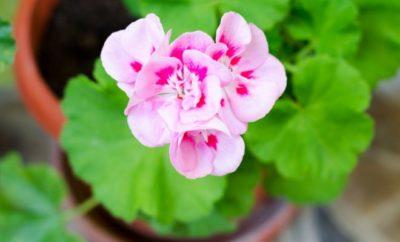

Geranium is a well-known plant that almost all growers know and grow without problems. Or at least they have experience in breeding this unpretentious flower.
He loves rare, but at the same time, abundant watering, he is not afraid of open air. Geranium is more associated with our grandmothers, but no one forbids her to breed for those who are much younger. How to properly plant geraniums with a shoot, including without roots, read on. Also watch a useful and interesting video on the topic.
Preparing a substrate for planting a flower
- Before preparing the ground, a container is selected. You can use a pot that has been used. In this case, wash it the day before the scheduled procedure and disinfect it.
- In the next step, a drainage layer is placed in the pot. It is sold in the store. In principle, you can not buy it, but use pebbles, polystyrene, ceramic fragments or broken brick for drainage. If in the future they water it with hard tap water, pieces of dried pine bark are placed on the bottom. It will acidify the soil and remove excess moisture from it.
- 1 / 5-1 / 4 of the volume of the pot is taken to the drainage layer. Then they put the soil. If you prepare it yourself, take the following components: turf, humus, sand (8: 2: 1). It is advisable to pour it after transshipment of the transplanted plant, trying to remove all the voids.
- It remains only to pour the geranium with settled water and wait for the excess to drain into the pan.
Tips for preparing the mother plant
When pruning a plant, when the desired shape of the crown of the bush is formed, a certain amount of shoots is often left that can be used for reproduction. But in order to obtain high-quality cuttings, it is better to prepare the mother plant specially.
For reproduction, it is necessary to choose only a healthy and non-flowering plant at the age of 2-3 years. Starting to decide how to plant a geranium shoot without roots, you should first start preparing the mother plant. 2 weeks before the start of reproduction, geraniums are placed in a semi-dark place and stop watering. Instead, top dressing is carried out with a solution consisting of wood ash and water.
Considering that a geranium shoot can be planted without roots, they should be properly cut. A stalk is a part of a plant used for propagation, from which a new geranium identical to the mother will germinate in the future.
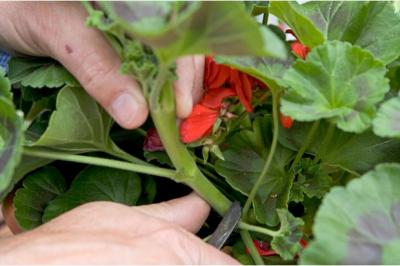

What types of soil are used
It is very important in what nutrient mixture the flower will be planted, since the future fate of the plant depends on its composition. There are several varieties of soil most commonly used when planting or transplanting indoor flowers. Let's consider the main ones.


Sod land
- In the classic version, such a soil is prepared in pastures or meadows where there is a lot of grass. Moreover, an old and stale, compressed layer is used. They take sod, as this type of soil is also called, in places with a neutral or low acidity level.
- It is subdivided into 3 main groups: light - with a large percentage of sand, the middle one consists of equal parts of sand and clay, and in the heavy one the main part is clay and only a little sand.
- The soil is prepared for use for several years, soaked in mullein and lime to lower the acidity level. Sod soil is in great demand in floriculture and horticulture, it is used everywhere. Its main advantage is porosity and saturation with all the necessary nutrients.
Leaf land
- The main part is harvested in the autumn during leaf fall. Leaves of fruit trees, linden, acacia and maple are especially suitable. It is not recommended to use oak and willow foliage, as they contain a lot of tannins.
- Layers are harvested, which are soaked several times with slurry, mullein, lime is added. Shovel periodically. After a year, the land is ready for use. It is loose, full of useful and nutritious substances.
Humus
It is obtained by mixing soil from a greenhouse and rotted manure. If you put it in a greenhouse in the spring, then in the fall there will already be humus.
Humus soil can be light, made from horse and sheep dung, or heavy, made from cow dung. This soil is also shoveled and periodically moistened. First, the stacks are stored outdoors and then transferred indoors.
Its composition is nutritious, saturated with many necessary microelements, but often heavy for many plants. Applies to instructions only.
- This substance is obtained from swamps. They are put into briquettes. Slurry is poured between them. There is peat crumb. Over the course of several years, it is periodically shoveling, only in the 3rd year the peat is ready.
- The result is a very light and loose soil that allows air and moisture to pass through well. More often peat is used with other types of soil, making them more hygroscopic, moisture permeable. The main role is a baking powder.
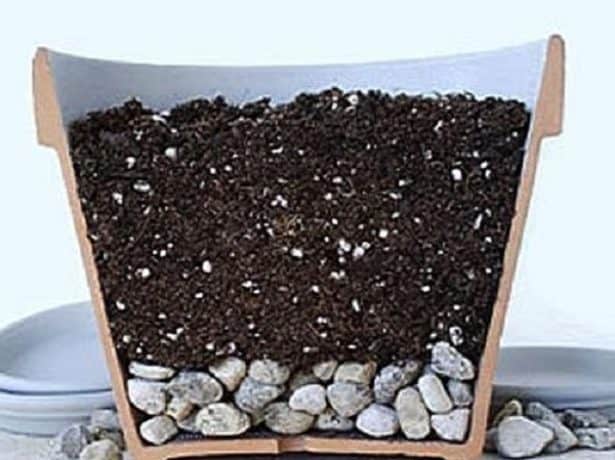

Description
Geranium is a vibrant flower that exudes a wonderful mint or lemon scent. It blooms very beautifully. The second name of the plant is pelargonium. The homeland of geraniums is Africa, therefore, in the natural conditions of our country, it is not comfortable enough.
The plant can reach a height of fifty centimeters. It has bright green leaves and large, beautiful flowers with a white border. Pelargonium fruits have an unusual shape. Depending on the type, flowers can be variegated or delicate shades, they also differ in shape.
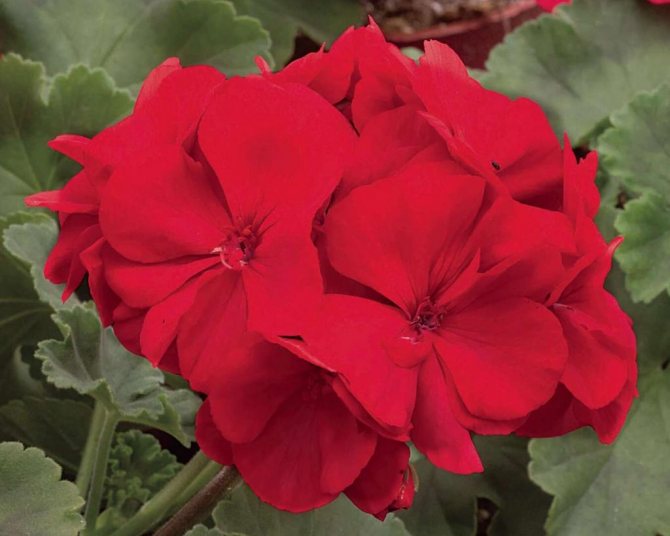

Rooting in water: rules and recommendations
Method 1 - propagation of geranium by cuttings in water - is carried out as follows:
- prepare a few cuttings;
- disposable plastic cups are optimal, opaque is better, it is recommended to use a formalin solution for disinfection;
- pour pre-warmed water to the middle (about 5 cm high) into each glass;
- many flower growers advise adding crushed activated carbon to the water for disinfection;
- lower the cuttings into the water with the lower part;
- it is recommended to change the water every 2-3 days;
- roots usually appear within 1-2 weeks;
- after the roots germinate, the shoot must be transplanted into a pot with soil.
The disadvantage of the rooting method in water is the manifestation in some cases of rotting of the cuttings (more often even before the roots appear), then the sprout has to be thrown away.
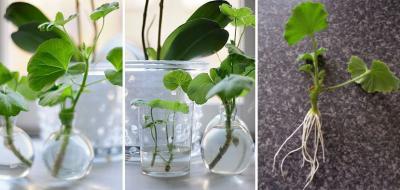

What should you pay attention to?
After planting the plant, you need to monitor its leaves. If they start to turn yellow, remove them immediately.This will make it possible to prevent the appearance of mold on the stalk of geranium.
How to shape a flower beautifully?
Due to its decorative qualities, geraniums are increasingly chosen not just as a houseplant, but also for decorating a home interior. With proper planting and further care, it will delight you with its bright flowering and magnificent appearance.
After the leaves appear, you can "pinch" the plant. This will allow the geraniums to grow laterally rather than tall. The foliage will be thicker than without pinching.
Important! During the flowering of geraniums, the pot must not be turned, otherwise the flowering may stop.
Mix of different colors in one vessel
Can varieties of different colors be planted in one pot? Yes, if you plant young geraniums next to each other, and it is optimal to grow a similar mix from shoots. But it is important to take into account the intensity of growth and calculate in advance the place for several root systems.
It is necessary to pinch them in time in order for the plant to sprout. It should be remembered that the result of such cultivation may not always meet your expectations.

